All Fixed Income articles – Page 70
-
 White papers
White papersAdjusting to the New Paradigm
Many investors could be lacking sufficient inflation exposure after experiencing such a long period of stable prices. Moreover, such a major economic inflection, combined with such fragile markets, is likely to be characterized by the kind of heightened market volatility we have already seen this year.
-
 White papers
White papersThe Inflation Inflection
The COVID-19 pandemic, and the range of policies aimed at mitigating its impact, has triggered a return to levels of inflation unseen for 40 years. While inflation is likely to moderate from these very high levels during 2022, we believe it will settle and persist at a rate higher than we have become used to over recent cycles.
-
 White papers
White papersUkraine invasion: market reaction
The crisis will create short-term uncertainty and add to inflationary pressures, say fund managers from the international business of Federated Hermes.
-
 White papers
White papersWhy banks get butterflies when fintechs have wings
Fiorino begins a short series of articles examining how mainstream banks and insurers are faring as a flurry of start-up enterprises disturb the competitive atmosphere…
-
 Podcast
PodcastCombatting Higher Rates & Inflation in Liquid Credit Portfolios
How can fixed income investors navigate a backdrop of rising rates and high inflation?
-
 White papers
White papersFive questions on asset-backed securities
David Favier, senior portfolio manager of European ABS strategies, reflects on the impact of the pandemic and the outlook for 2022.
-
 White papers
White papersRussia-Ukraine escalation adds to the case for additional protection
The investment landscape has become riskier. The escalation in geopolitical tensions between Russia and Ukraine, with Russian military forces entering the Donbas region, adds to the uncertainty regarding central bank actions to fight inflationary pressures.
-
 White papers
White papersThe myriad of challenges – and opportunities – facing fixed income in 2022
The question of whether inflation is likely to prove temporary or more persistent is just one of the challenges facing fixed income investors this year. Buying on the dips may no longer be sufficient as the focus of central banks switches to containing inflation rather than simply rallying to support financial markets.
-
 White papers
White papersDBS case study
EOS communicated to DBS investor concerns about sustainable palm oil production and pressed for an improved palm oil financing policy for existing borrowers. We were pleased to see DBS improved its palm oil financing policy for all customers, requiring a “No Deforestation, no Peat, no Exploitation” commitment, or principles and criteria of the RSPO for all its existing and new borrowers.
-
 White papers
White papersInvesting in fixed income during a hiking cycle
It’s a common preconception that rising interest rates are bad for bonds. While rate hikes are undoubtedly a headwind for fixed income assets, investors tend to overestimate the impact of rising rates and can overlook the benefits of holding bonds as part of a resilient and balanced portfolio.
-
 Video
VideoMulti Sector Fixed Income Team Outlook
Jaina Varsani and Ashok Bhatia discuss the fixed income outlook for 2022 and update on the positioning of our multi-sector fixed income funds.
-
 White papers
White papersBAE Systems case study
BAE Systems has accelerated its societal and environmental ambitions with key commitments regarding its workforce and climate.
-
 White papers
White papersValue Stocks: Inflation Wave Adds Fuel to Recovery
Value stocks outperformed through mid-February as investors repriced expensive growth stocks. Now, mounting inflation and rising interest rates are creating conditions for a broader value recovery, particularly for companies that have solid business fundamentals.
-
 White papers
White papersManaging Duration in Multi-Asset Strategies? Be Dynamic
For most of the past decade, government bonds have contributed positive returns and a note of stability to multi-asset portfolios. But since late 2021, they’ve been much more volatile, as markets digest central banks’ transitions toward tighter monetary policy.
-
 White papers
White papersAs COVID Cases Fade, Services Ready for Upgrade
January U.S. retail sales surprised to the upside, rising 3.8% M/M. The Omicron wave temporarily halted the shift in consumer spending from goods to services, as at-home sectors gained. Meanwhile, restaurant sales fell for a second-consecutive month.
-
 Podcast
PodcastThe Investment Podcast: Inflation – is it beyond transitory and now structural?
With inflation sitting at the core of many issues that investors are grappling with today, David Parsons sits down with Miles Tym and Richard Ryan to consider the pacing of central bank policies to tackle this rising concerns, the potential danger points following interest rate hikes and how an evolving environment might impact a wider range of bond assets, specifically corporate bonds.
-
 Video
VideoNeuberger Berman’s Multi Sector Fixed Income Funds
In this short video, we two of introduce Neuberger Berman’s Multi-Sector Fixed Income Funds looking at some of the distinctive features of our capabilities in this space.
-
 Research Report
Research ReportNuveen global fixed income impact report 2021
Welcome to the Nuveen global fixed income 2021 impact report which demonstrates how impact investing in public fixed income markets is not only possible, but vital to addressing many of the large-scale, systemic challenges the world faces today.
-
 White papers
White papersInvestment Symposium Series – Signs of a thaw in China’s property freeze
China’s efforts to tackle soaring home prices and rein in its large property developers have sparked heavy asset price falls and concerns over a credit crunch. However, for our China specialists, there have also been signs of a gradual turnaround.
-
 White papers
White papersEquity Convexity and Unconventional Monetary Policy
In this paper, we intend to gain an understanding of the drivers of stock convexity, also known as gamma.


